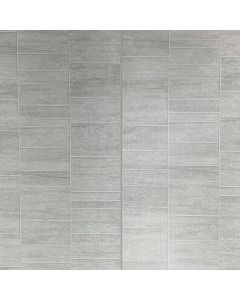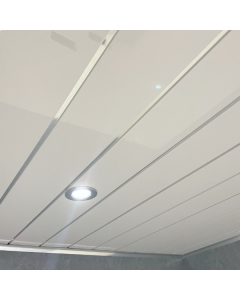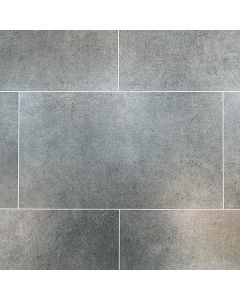Fitting And Sealing A Shower
If you’re updating your main bathroom with a new shower or using one as part of a new shower room, it’s crucial to pick one that’s compatible with your home’s plumbing system. This blog will guide you through the entire process, from selecting your brand-new shower to fitting and sealing it, while adhering to the proper safety guidelines.
Remember, to fit and seal a shower; you’ll need to carry out several electrical and plumbing tasks, and ensure that you have installed shower wall panels. Therefore, if you’re not a confident DIYer with experience in these areas, it’s best to call a professional before fitting a new shower.
Choosing a shower
If you have a gravity-fed system (a hot water cylinder and cold-water storage system in the loft), you have several options. You can choose from an electric shower, a power shower, or a mixer shower (with or without a pump). However, if you’ve got a combination boiler, your options are limited to fitting a new shower that is either electric or mixer, as pumps are not compatible with combi boilers.
Fitting a new shower: electric shower
If you opt for an electric shower, you can install it over your bath or in a separate enclosure. Be mindful of leaving enough room around it to remove the front cover, as it might need servicing in the future.
The water supply could potentially enter from the top, bottom, or rear, depending on the type of unit. Before connecting your shower unit, turn on the water to flush away any debris, before turning it off and draining the pipe – and be sure when you have fitted it, that you work on appropriately sealing a shower.
Before you fit your shower, you’ll need to prepare the pipework and install an electricity supply.
How to prepare the pipework before fitting a new shower
Run a 15mm pipe from the cold-water supply to the wall where you’re installing the shower. Next, mark the position for the inlet pipe and power supply cable. Before drilling into the wall, use a pipe and cable detector to check there are no concealed pipes. If it’s clear, drill the hole and insert the pipe. Finally, fit an isolating valve in the pipe, before attaching the unit’s connector.
Providing the power supply
Drill the hole for the electric cable. Check the manufacturer’s instructions to determine the cable size you need (this depends on your shower’s kilowatt rating and the length of the run). Run the cable to a ceiling-mounted pull-cord switch, while ensuring it is not in Hazard Zones 1 or 2 as defined by the IEE Wiring Regulations. You will require a professional electrician to make the final connection, as electric showers require a dedicated circuit from the consumer unit.
How to fit a shower: Step-by-step
Discover how to fit a shower, specifically an electric shower:
Step 1
Hold the shower unit in position and mark the fixing holes with a pencil, before drilling the holes. Fit wall plugs where required and apply some silicone sealant to each one.
Step 2
Feed the pipe and electric cable through the unit’s backplate, before screwing it to the wall. Connect the inlet pipe to the shower unit.
Step 3
Attach the electric cable to the unit. Connect the live and neutral cores to the load terminal, and the earth core to the earth terminal.
Step 4
Following the manufacturer’s instructions, fit the cover. While doing this, make sure the rubber seal is firmly in place.
Step 5
Fit the shower rail, ensuring it’s high enough so that the showerhead doesn’t dangle less than 25mm from your bath or shower tray’s spill-over level. This positioning prevents dirty water from re-entering the clean water supply.
Step 6
Screw one end of the hose to the shower handle. Finally, check everything is working correctly and adheres to the manufacturer’s instructions before screwing the other end to the shower.
Fitting a thermostatic mixer shower
You can supply your thermostatic mixer shower via branch pipes from your hot and cold plumbing system when discovering how to fit a shower. This also applies to showers without a pump. Remember, it’s the height of the cold-water tank above the shower that determines the water pressure in a gravity-fed system. Therefore, it’s best to try to join the branch pipes as near as possible to your cold and hot water tanks – this will also help when sealing a shower.
For showers without a pump, allow for at least one metre between the bottom of the tank and the showerhead – this should enhance the water pressure and flow rate.
Fitting a thermostatic mixer shower: Step-by-step
Step 1
After establishing your shower’s position and pipe entry direction (e.g. rising, falling, rear), affix the pipework. Ensure both the hot and cold-water pipes are securely attached within the panel or wall as it will support the valve while preventing movement.
Step 2
Fit the compression olives, and ensure all pipework is thoroughly flushed before connecting the shower valve. Turn on the water supply to check for leaks. Referring to your manufacturer’s instruction booklet, install the outlet fittings.
Fitting a shower tray and sealing a shower
If you have the correct waste pipework in place, you can fit the shower tray. When sealing a shower, be sure to remove the old silicone sealant before you apply anything new. The simple guide below explains the process.
Step 1
Holding the tray on its side, apply a small bead of silicone sealant around the waste exit point.
Step 2
Fit the waste outlet into the exit hole so it enters the sealant. After fitting the supplied washers, screw on the locking nut with an adjustable spanner.
Step 3
Mix the mortar while wearing protective gloves. With a trowel, apply a thin layer on the floor where the tray will go, then secure it in place.
Step 4
After bedding the tray into the mortar, use a spirit level to ensure the layer isn’t sloping. If it isn’t level, lift the tray and adjust the mortar. Next, tidy the edges and remove any excess mortar with your trowel. Finish by opening the floor hatch and connecting the trap to the waste pipe.
What is the best way to stick a shower tray when sealing a shower?
When sealing a shower, to stick a shower tray use tile adhesive, silicone or a weak cement mix. Apply a sufficient amount to cover the bottom of the tray, with 5mm thickness to its lowest point. More may be required to ensure the tray is level. Then, stick this to your floor.
Safety considerations
Always remember to install the above products in accordance with local building regulations when fitting a new shower or sealing a shower. If in doubt, or where required by the law, consult a professional. Keep in mind that all new and modified installations must comply with the IEE Wiring Regulations (18th edition).
























